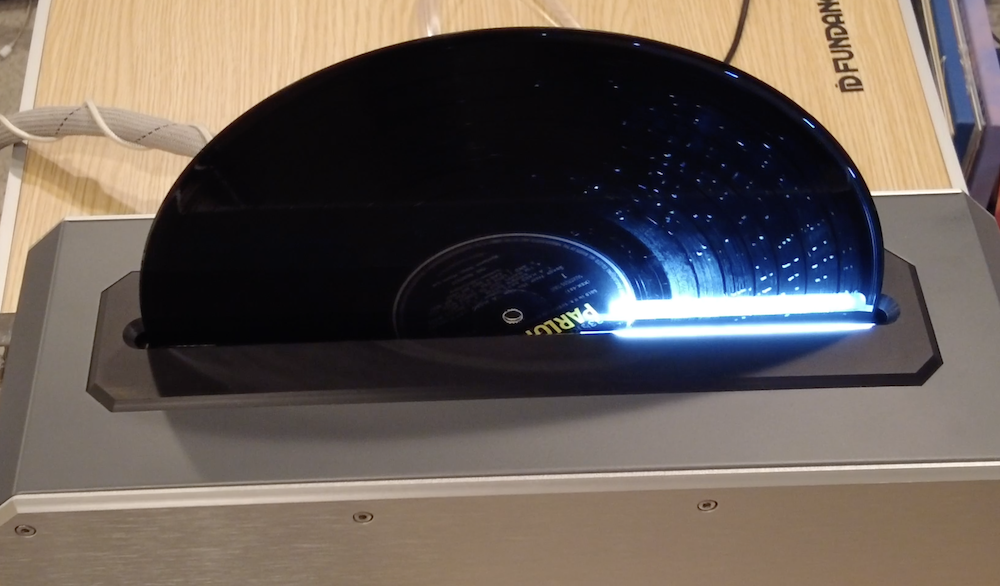The KLAUDIO KD-CLN-LP200T Cavitation-Based Record Cleaning Machine
costly, but reliable, reasonably quiet and efficacious
This is probably the most costly cavitation based machine you can buy and it's also most likely the most ruggedly built and if not the most effective, among the most effective and easy to use. When you read "the most" or "the best" and the reviewer writing or saying that hasn't sampled every possible contender, whether it's a cleaning machine, or an amplifier or a turntable, or whatever, it's pure clickbait and nothing more. And it's so tiresome, though unintentionally funny. Like reviews from newbie reviewers that conclude "If there's a better (fill in the blank) I haven't heard it!" (and he's heard 3 in his year long reviewing career). I haven't used every cavitation based machine, so no "global" pronouncements!
Because the pump and water tank on this machine are on the outside, should the pump fail, it's user-replaceable and it can be done in minutes. These are extremely reliable machines with a long running track record for working heavy duty hours under extreme conditions. This sample has been 100% reliable over a long time period.
It's the machine Acousticsounds uses to clean used records it sells and according to Chad Kassem it sometimes has the ability to turn VG and VG+ records into M- records. That's been my experience as well, which is why I bought the review sample shortly after purchase. I still use the Kirmuss machine for record restoration, as discussed in this video and the Audio Deske remains a good, if less than fully reliable machine, though it is not a true cavitation-based cleaning machine.
The KLAUDIO machine costs $6499 and in America is available only from Acousticsounds.com. The manufacturer stopped making these machines because he found it too costly to build and he wasn't making any money on it. Acoustic Sounds convinced him to build some, but they had to buy then entire run at what was the retail price. That accounts in part for why it's so expensive—along with the fact that the build quality is unsurpassed.
Before the video review itself, I go into a long, detailed description of cavitation because I don't think it's been critically addressed in the online and written reviews I've watched and read. And even here, after a great deal of research and consultation I'm not 100% certain everything presented is totally accurate, however I think it is. Finding cavitation experts is not easy!
This machine does its job without the addition of any surfactants, additives, detergents, miracle ingredients, wood glue, maple syrup or whatever other nonsense some online "authorities" claim improve performance. I've used it for months using just reverse osmosis water, though I've found distilled from the supermarket also works fine. The instructions say "tap water" but mine is so heavily chlorinated that we use a soft water system here and I'm not sure the soft water salt is good for either the machine or the records so only R.O. or store bought distilled for me. I don't understand why KLAUDIO recommends tap water.
This machine has a few options I didn't try like a direct to your plumbing connection, which adds convenience as it does for espresso machines that offer that, but again I'd only do it directly off the R.O. output (for both records and coffee!). There's also a cooling system option for heavy users. It's important to remember that cavitation generates heat so it's important to take the water's temperature if you do clean a lot of records in a single session, which I don't.
Though the filter is supposed to allow you to clean up to 500 records before changing the water, I'd rather be safe so I change the water every 50 or so records.
There are references to Charles Kirmuss and his machine and his restoration process, which takes record cleaning to another level. It's time consuming and not everyone wants to go to such lengths to achieve cleaning perfection but it's nonetheless an interesting and useful methodology that I have been skeptical about from "day one". Over time, Kirmuss has bought the tools and done the research to demonstrate the efficacy of what he does.
One point I want to make about the Kirmuss system, which is that while it doesn't fan dry records and you need to use a microfiber cloth for drying, his process produces a record that's almost dry when I remove it from the water bath so drying is a quick few passes of the cloth.
At the end of this review there's a demo of Kirmuss's "tin foil test", which he says separates the real cavitation machines from the ones in name only. Watch for it!
There will be future review of the iSonic machine, a reconsideration of the Audio Deske and perhaps a review of the HumminGuru if we can get a review sample, or if someone wants to lend one for review.
I remain 100 open to corrections and additions to what's included in this video review, but for now, based on experience with this machine, I do not understand why anyone would use any sort of additive to a machine that genuinely cavitates records. Just plain water cleans records extremely well and absolutely removes many pops and clicks, some of which have been all too familiar "friends" for decades!











































.png)








